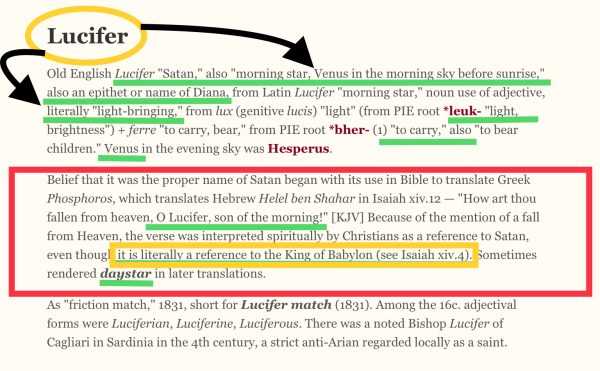Isaiah 14:12 1611 KJV, How art thou fallen from heaven, O Lucifer, son of the morning! how art thou cut down to the ground, which didst weaken the nations!
The Capillary Wave

# 10. Calling All Patriots [Page 3]
A Capillary Wave Article by: C M EDWARDS November 2023
An Examination Of What It Means To Be Patriotic

The Apotheosis Of Man – Man In Place Of God
Throughout these articles we have evidenced that legality is in opposition to morality, see Legality Vs Morality. That man’s legal fictions / graven images, legal world, is in opposition to the Lawful jurisdiction and Gods Governance; and that The Bible has evidenced this time, and again throughout. The word definitions have also evidenced what The Bible has stated also, as well as man’s own laws, and some of the legal jurisdictions own important key figures, have also pointed towards a higher authority, and stated as such, these persons even condemn their own legal fictions, in their own legal maxims – see Article #9, Government and God – Lord Denning’s comments.
If you have read all of my articles thoroughly, you will have a much more in-depth understanding about how a country is set up and operates. There can be no doubt whatsoever about the inferiority of man’s laws and legal persons compared to the Lawful jurisdiction, and there can be no doubt that the Bible states that this is: really not a good thing at all to be involved in. The legal jurisdiction is the secular jurisdiction. Sadly many many Christians, citizens, patriots and commoners are convinced of the law as transgressors and are evidently on the wrong path. The Bible states: Broad is the way that leads to destruction.
A polity; a country, by definition places man /persons in the position of God, making himself as a god, under the Roman Civil Law, and with the ability to create laws, and rule over other persons. A country places persons under the rule of other persons in that society, and taking the place of God, this is known as deification. Which again would align with what a patriot is involved in, being a countryman, peasant of a country, and it would also be why this is warned against in The Bible as we have evidenced above in great detail. A peasant is a pagan and an inferior ranking countryman, of a country.
A good example of what The Bible warns against which we explored above is further evidenced in Washington D.C which is a “District”of Colombia, which is a district within a country. In the United States Capital Building in Washington D.C, there is a fresco painted on the ceiling of the Oculus. It is called: The Apotheosis of Washington and it depicts George Washington sitting among the heavens in an exalted manner, ascending and becoming a god (apotheosis). George Washington is draped in purple, worn by generals of the ancient Roman Republic during their triumphs, with a rainbow arch at his feet, flanked by the goddess Victoria, who is draped in green, using a horn, to his left and the goddess of Liberty to his right. These gods Washington sits with, are Roman gods, and not The LORD God, obviously. The links with Rome, and Civil Law, and Roman gods, further evidences the patriot – pagan connection. You may also see another similarity in the definition of the word: Babylon, whereby it talks of the same purple robes which we will also see has some significance later when we meet the Queen Of Heaven.
The goddess of liberty is in the form of a very famous statue overlooking New York. The Statue of Liberty. Both the Roman goddess Libertas and Sun god Sol Invictus (“The Unconquered Sun”,) influenced the design of Liberty Enlightening the World. The goddess Libertas is also the Greek equivalent goddess Eleutheria.
Liberty is freedom under licence, freedom granted by an authority, a state, a country, a government. It is licentious freedom for the exiles. A photograph of the Statue of Liberty:
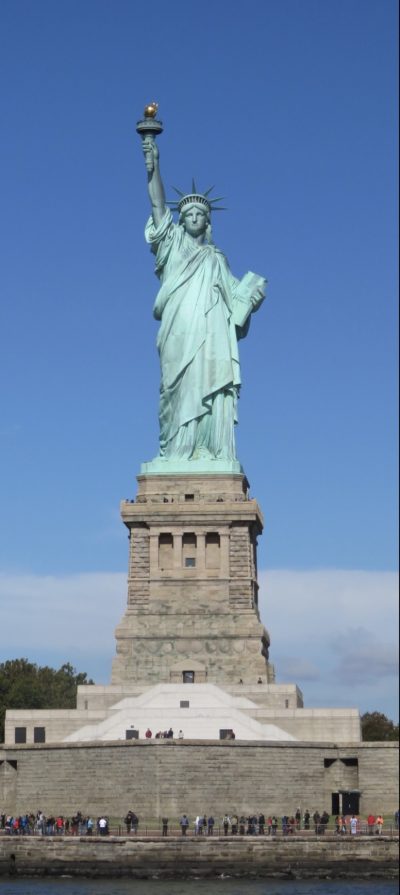
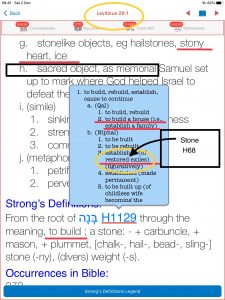
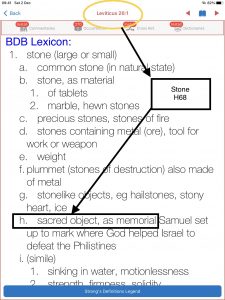
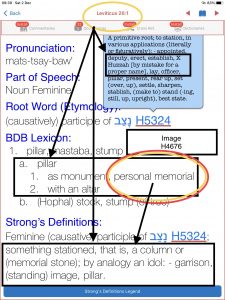
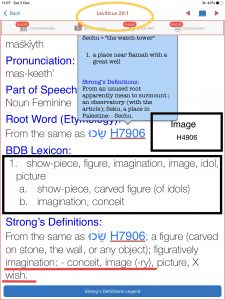
The Statue Of Liberty is the very epitome of what we examined in great detail above at: Leviticus 26:1. I do not believe it is a coincidence that The Statue of Liberty faces East, where the sun rises, and she is a light bearer. We will examine yet more evidence to see if my suspicions are correct: “Lucifer Son of the morning.” – see Ezekiel 19:12 below.
Come Out Of Her My People
Everything associated with a country is in direct opposition to God. We have put forward a lot of evidence to support that statement. Yet there is still more to come.
We have spoken about fathers and why they are very important in respect of law and governance. We have our Father who art in heaven, we also have biological “fathers”. Did you know Hell was feminine? Why was Babylon a whore? Who is the Queen of Heaven? Logically thinking, living in a duality as we do, the opposition to The Father in Heaven, would be a feminine energy of Hell. Just what are patriots in bed with?:
- Isaiah 5:14, KJV 1611 – Therefore hell hath enlarged herself, and opened her mouth without measure: and their glory, and their multitude, and their pomp, and he that rejoiceth, shall descend into it.
- Revelation 17:5, KJV 1611 – And upon her forehead was a name written, MYSTERY, BABYLON THE GREAT, THE MOTHER OF HARLOTS AND ABOMINATIONS OF THE EARTH.
Each country is represented by the female mother goddess: The Queen Of Heaven, here are just a few samples:
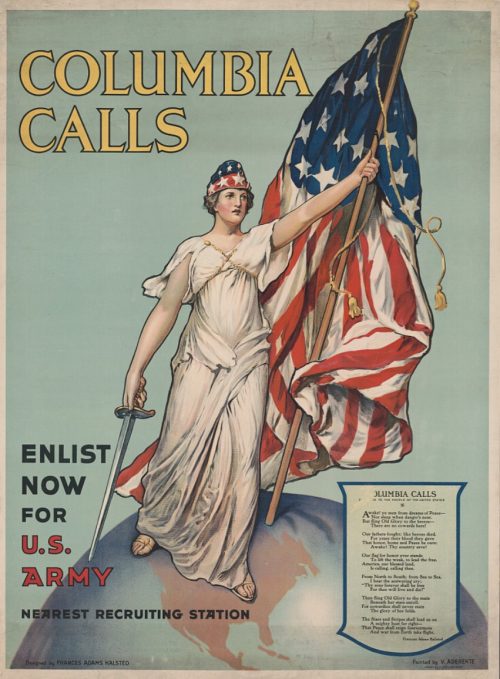
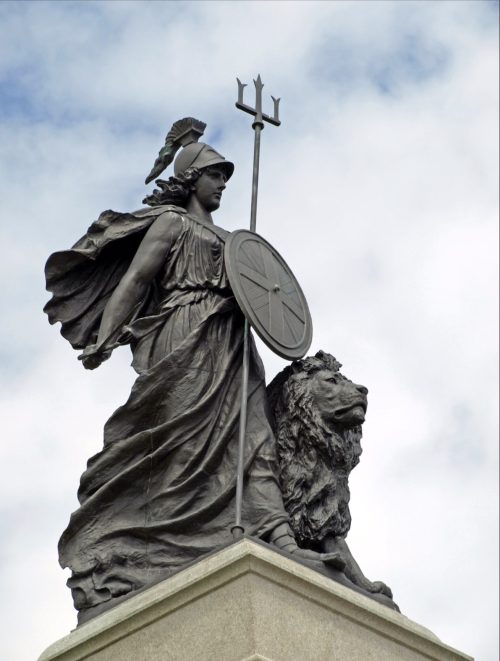
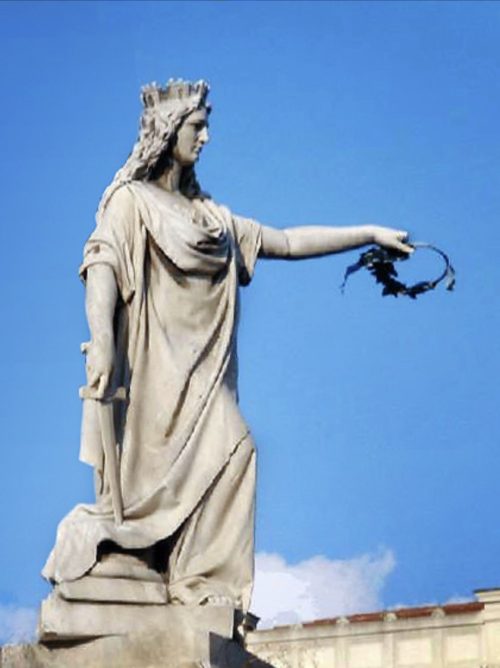
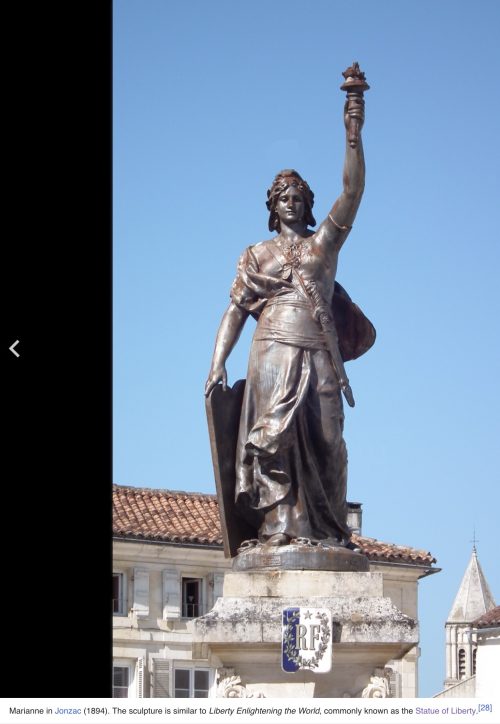
Germania of Germany:
Mother Russia of Russia:
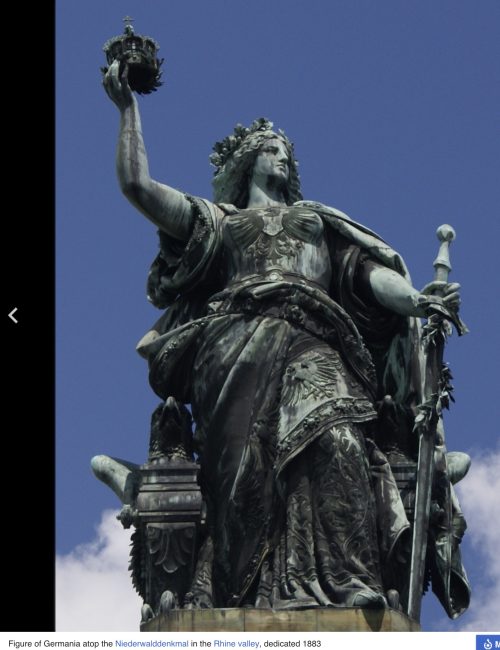
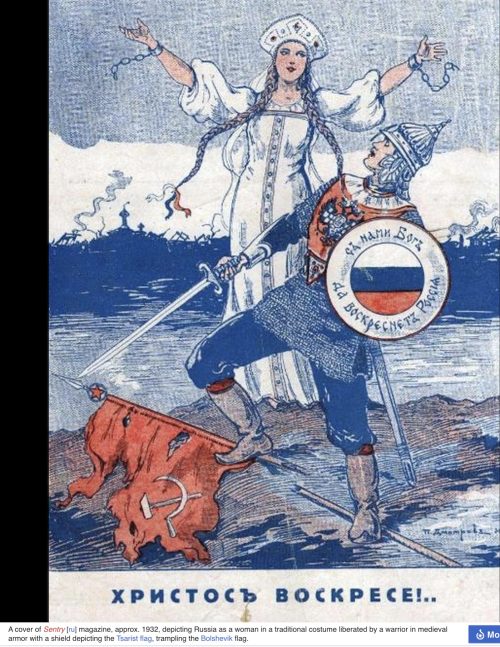
Hispania of Spain:
Mother Svea of Sweden:
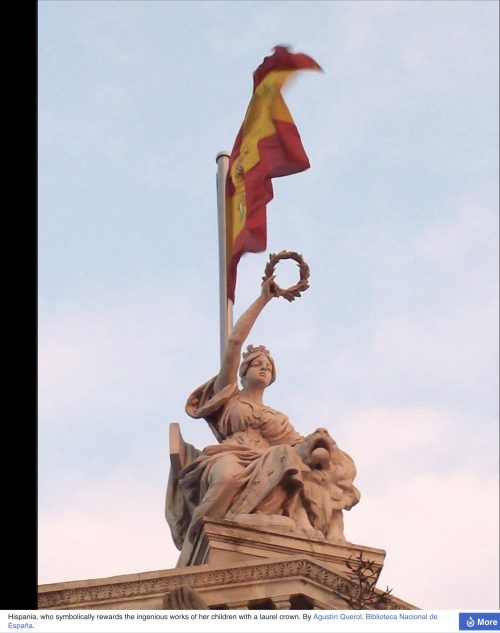
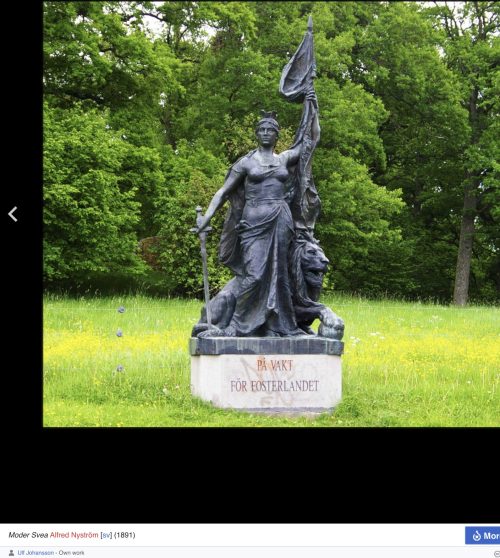
The Statue Of Liberty of Argentina:
Portuguese Republic. Portugal:
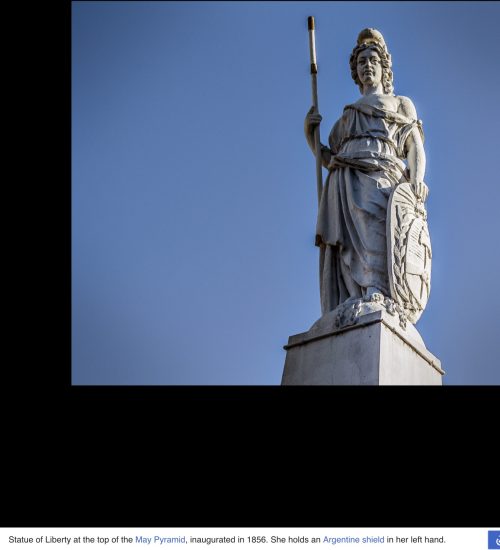
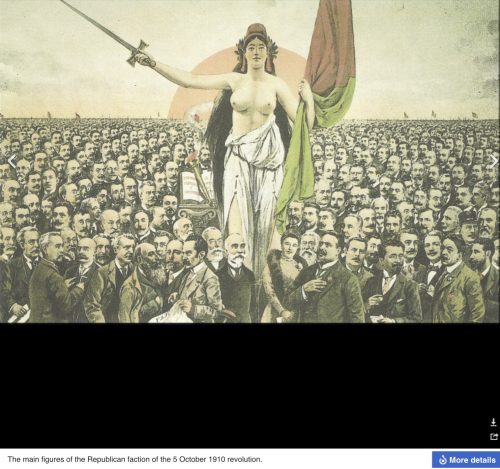
There can be little doubt that these are all female pagan representations of their respective countries. These are the graven images of the gods that all patriots, citizens, commoners are under, which was warned against in The Bible. They all look strikingly familiar to The Statue of Liberty at New York. The Statue Of Liberty is not the only “Statue of Liberty”. The “liberty” which a country offers is “licentious liberty”; but from whom are the patriot citizens liberated from; can you guess why they are “liberated,” and why they are “exiles”? Did you know citizen, that you are an exile from the LORD God? Perhaps now you can understand why that may be the case?
- Isaiah 51:14, KJV 1611 – The captive exile hasteneth that he may be loosed, and that he should not die in the pit, nor that his bread should fail.
Each female representation is carrying a rod or staff. These two words are very closely linked, a rod is a closely etymologically linked to: “wand of office”, and “laurel branch”. Staff can mean “sin”, “vice”, and “Offence”. Laurel is also etymologically linked back to “rod”, “branch”, “twig”, and “turn, bend”. The rod, and branch reference can be seen in the Bible Chapter at Ezekiel 19:1-14 below.
Below is a poem fixed to the base of The Statue Of Liberty:
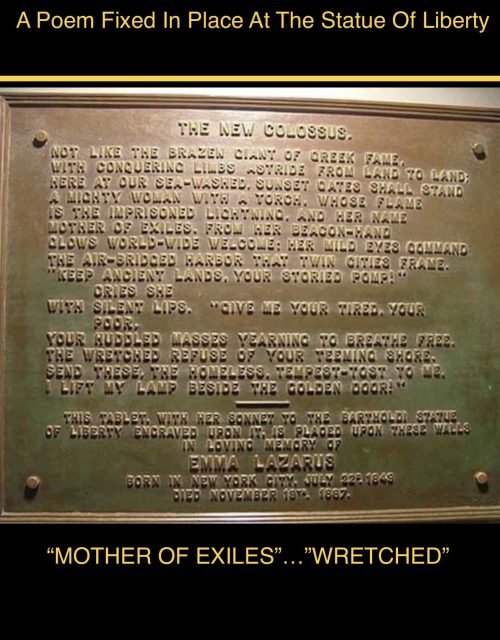
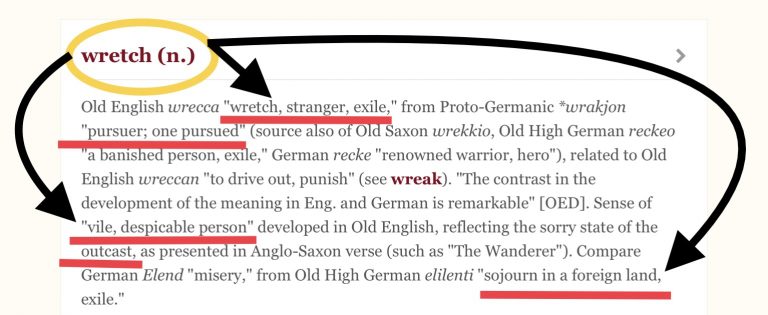

The hymn: Amazing Grace, also mentions a “wretch”:
Amazing Grace
How Sweet The Sound
That Saved A Wretch Like Me
I Once Was Lost But Now I’m Found
Was Blind But Now I See
‘Twas Grace That Taught
My Heart To Fear
And Grace My Fears Relieved
How Precious Did That Grace Appear
The Hour I First Believed
My Chains Are Gone
I Have Been Set Free
My God My Saviour Has Ransomed Me
And Like A Flood His Mercy Rains
Unending Love Amazing Grace
The Lord Has Promised Good To Me
His Word My Hope Secures
He Will My Shield And Portion Be
As Long As Life Endures
The Earth Shall Soon
Dissolve Like Snow
The Sun Forbear To Shine
But God Who Called Me Here Below
Will Be Forever Mine
Will Be Forever Mine
You Are Forever Mine
Does the below chapter from Ezekiel 19:1-14 sound familiar, given the images we have just seen of the various female personifications of the countries?:
1 – Moreover take thou up a lamentation for the princes of Israel,
2 – And say, What is thy mother? A lioness: she lay down among lions, she nourished her whelps among young lions.
3 – And she brought up one of her whelps: it became a young lion, and it learned to catch the prey; it devoured men.
4 – The nations also heard of him; he was taken in their pit, and they brought him with chains unto the land of Egypt.
5 – Now when she saw that she had waited, and her hope was lost, then she took another of her whelps, and made him a young lion.
6 – And he went up and down among the lions, he became a young lion, and learned to catch the prey, and devoured men.
7 – And he knew their desolate palaces, and he laid waste their cities; and the land was desolate, and the fulness thereof, by the noise of his roaring.
8 – Then the nations set against him on every side from the provinces, and spread their net over him: he was taken in their pit.
9 – And they put him in ward in chains, and brought him to the king of Babylon: they brought him into holds, that his voice should no more be heard upon the mountains of Israel.
10 – Thy mother is like a vine in thy blood, planted by the waters: she was fruitful and full of branches by reason of many waters.
11 – And she had strong rods for the sceptres of them that bare rule, and her stature was exalted among the thick branches, and she appeared in her height with the multitude of her branches.
12 – But she was plucked up in fury, she was cast down to the ground, and the east wind dried up her fruit: her strong rods were broken and withered; the fire consumed them. [This is describing Lucifer being thrown out of heaven].
13 – And now she is planted in the wilderness, in a dry and thirsty ground.
14 – And fire is gone out of a rod of her branches, which hath devoured her fruit, so that she hath no strong rod to be a sceptre to rule. This is a lamentation, and shall be for a lamentation.
Meet the Queen of Heaven
Inanna’s name is commonly derived from Nin-anna which literally means “Queen of Heaven” in ancient Sumerian (It comes from the words NIN meaning “lady” and AN meaning “sky”). She looks very familiar would you not agree? Horns on her head (laurels and crowns in the examples above), and a lion at her feet, and carrying some weapons. She looks very much like our country girls above. In Sumer Inanna was hailed as “Queen of Heaven” in the third millennium BC. In Akkad to the north, she was worshipped later as Ishtar. In the Sumerian Descent of Inanna, when Inanna is challenged at the outermost gates of the underworld, she replies:
I am Inanna, Queen of Heaven, On my way to the East Her cult was deeply embedded in Mesopotamia and among the Canaanites to the west. F. F. Bruce describes a transformation from a Venus as a male deity to Ishtar, a female goddess by the Akkadians.
She was the patron goddess of the Eanna temple at the city of Uruk, her early main cult center. In archaic Uruk she was worshiped in three forms: morning Inanna (Inana-UD/hud), evening Inanna (Inanna sig) and princely Inanna (Inanna NUN), the former two reflecting the phases of her associated planet Venus.[5][6] Her most prominent symbols included the lion and the eight-pointed star. Her husband was the god Dumuzid (later known as Tammuz), and her sukkal (attendant) was the goddess Ninshubur, later conflated with the male deities Ilabrat and Papsukkal.
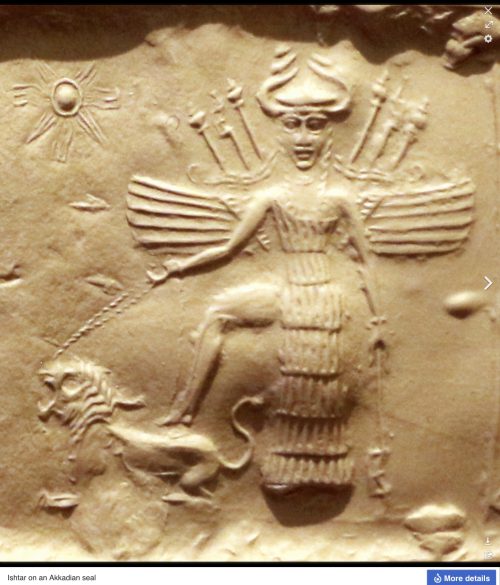
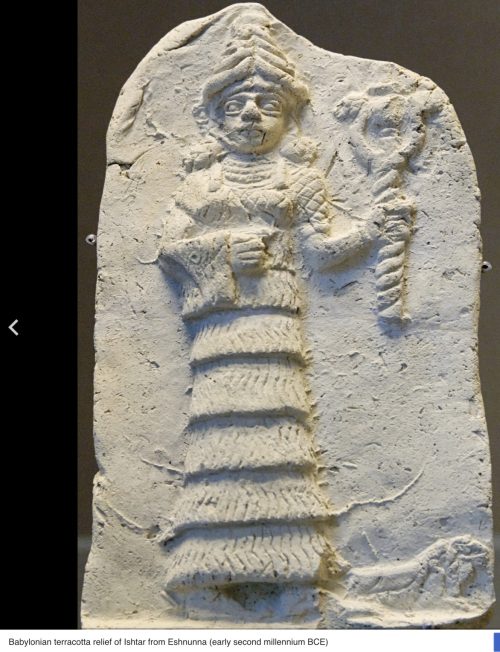
Symbology
Inanna/Ishtar’s most common symbol was the eight-pointed star, though the exact number of points sometimes varies. Six-pointed stars also occur frequently, but their symbolic meaning is unknown. The eight-pointed star seems to have originally borne a general association with the heavens, but, by the Old Babylonian Period (c. 1830 – c. 1531 bce), it had come to be specifically associated with the planet Venus, with which Ishtar was identified. Starting during this same period, the star of Ishtar was normally enclosed within a circular disc. During later Babylonian times, slaves who worked in Ishtar’s temples were sometimes branded with the seal of the eight-pointed star. On boundary stones and cylinder seals, the eight-pointed star is sometimes shown alongside the crescent moon, which was the symbol of Sin (Sumerian Nanna) and the rayed solar disk, which was a symbol of Shamash (Sumerian Utu).
Inanna/Ishtar was associated with lions, which the ancient Mesopotamians regarded as a symbol of power. Her associations with lions began during Sumerian times; a chlorite bowl from the temple of Inanna at Nippur depicts a large feline battling a giant snake and a cuneiform inscription on the bowl reads “Inanna and the Serpent”, indicating that the cat is supposed to represent the goddess. During the Akkadian Period, Ishtar was frequently depicted as a heavily armed warrior goddess with a lion as one of her attributes.
As The Planet Venus
Inanna was associated with the planet Venus, which is named after her Roman equivalent Venus. Several hymns praise Inanna in her role as the goddess or personification of the planet Venus.Theology professor Jeffrey Cooley has argued that, in many myths, Inanna’s movements may correspond with the movements of the planet Venus in the sky. In Inanna’s Descent to the Underworld, unlike any other deity, Inanna is able to descend into the netherworld and return to the heavens. The planet Venus appears to make a similar descent, setting in the West and then rising again in the East. An introductory hymn describes Inanna leaving the heavens and heading for Kur, what could be presumed to be the mountains, replicating the rising and setting of Inanna to the West. In Inanna and Shukaletuda, Shukaletuda is described as scanning the heavens in search of Inanna, possibly searching the Eastern and Western horizons. In the same myth, while searching for her attacker, Inanna herself makes several movements that correspond with the movements of Venus in the sky. Because the movements of Venus appear to be discontinuous (it disappears due to its proximity to the Sun, for many days at a time, and then reappears on the other horizon), some cultures did not recognise Venus as a single entity;[89] instead, they assumed it to be two separate stars on each horizon: the morning and evening star. Nonetheless, a cylinder seal from the Jemdet Nasr period indicates that the ancient Sumerians knew that the morning and evening stars were the same celestial object. The discontinuous movements of Venus relate to both mythology as well as Inanna’s dual nature. Modern astrologers recognise the story of Inanna’s descent into the underworld as a reference to an astronomical phenomenon associated with retrograde Venus. Seven days before retrograde Venus makes its inferior conjunction with the sun, it disappears from the evening sky. The seven day period between this disappearance and the conjunction itself is seen as the astronomical phenomenon on which the myth of descent was based. After the conjunction, seven more days elapse before Venus appears as the morning star, corresponding to the ascent from the underworld.
